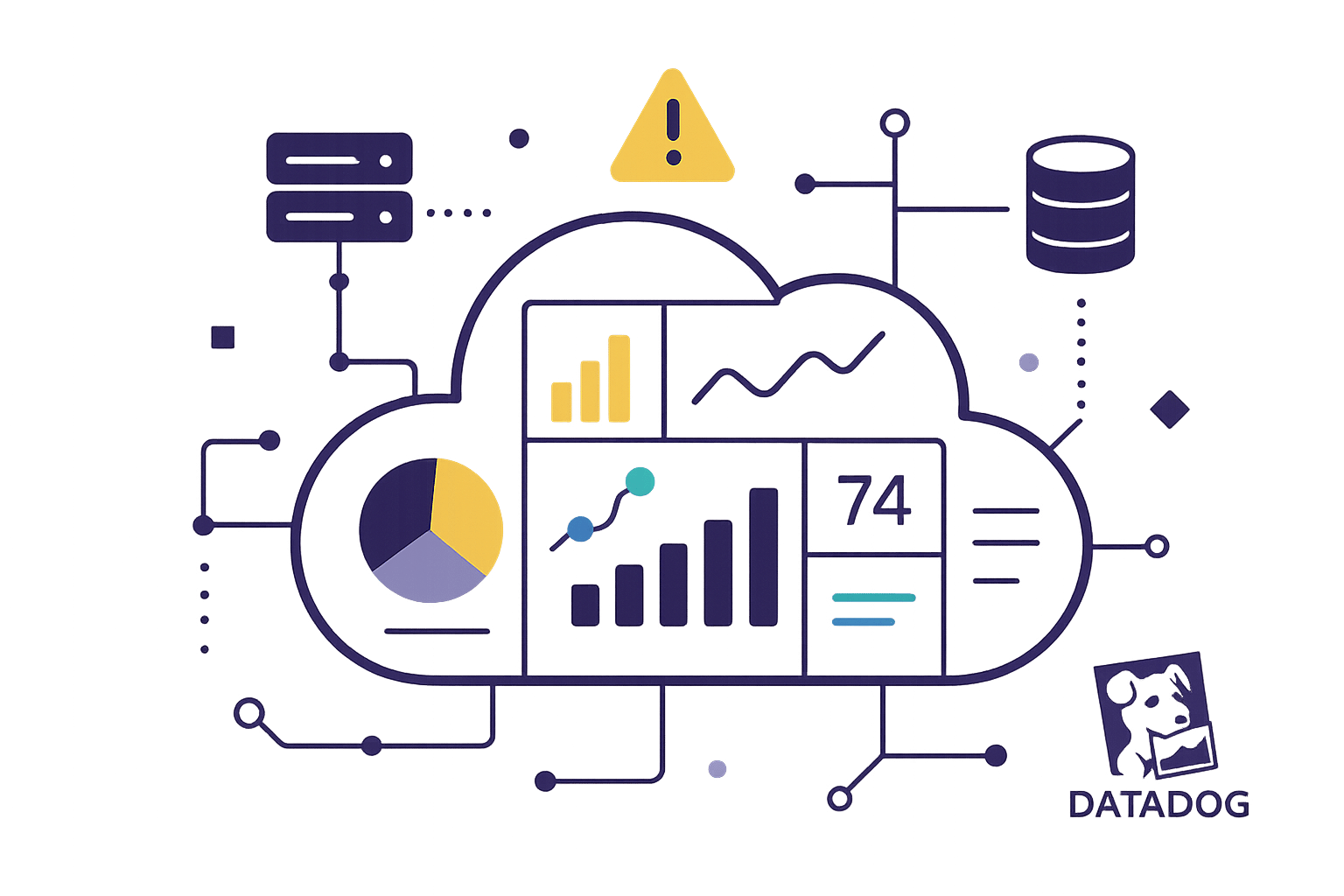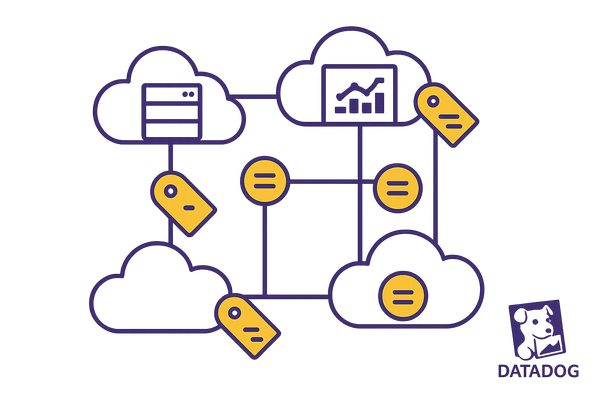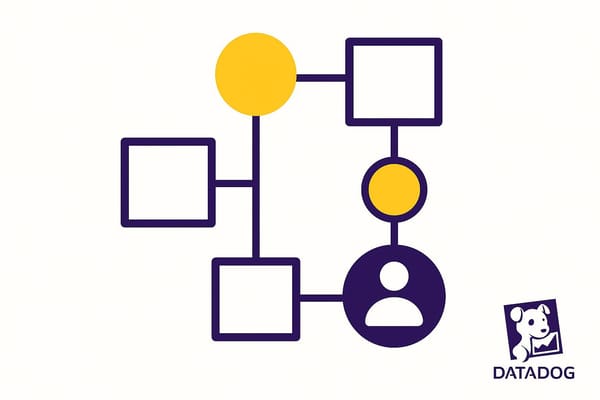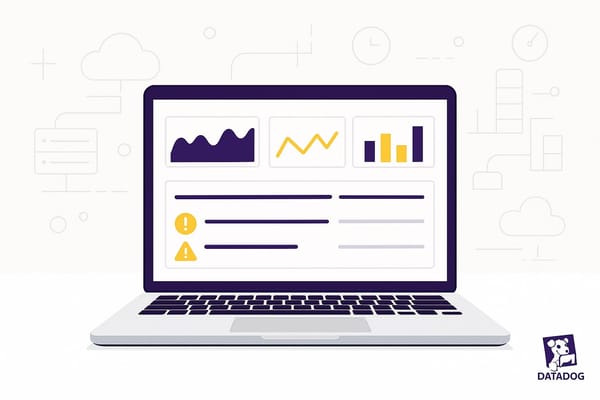Datadog Anomaly Detection: Cost-Saving Tips
Learn effective strategies to reduce Datadog anomaly detection costs while maintaining high performance through optimized data filtering and tagging.

Want to cut costs on Datadog anomaly detection without sacrificing performance? Here's how you can do it:
- Filter Data Wisely: Monitor only critical metrics, adjust sampling rates, and remove unnecessary data.
- Streamline Tagging: Use a clear, structured tag hierarchy with consistent and essential identifiers to reduce costs and improve efficiency.
- Optimize Storage: Shorten data retention periods, archive less important logs, and focus on actionable custom metrics.
- Refine Alerts: Fine-tune thresholds, group similar alerts, and avoid excessive sensitivity to reduce false positives.
Fama Achieves 100% Datadog Visibility and Automates ...

Cost Factors in Anomaly Detection
Datadog's pricing for anomaly detection is influenced by three main elements: data volume, tag management, and storage for custom metrics.
Data Volume Impact
The amount of data you ingest depends on factors like how often metrics are collected, the number of hosts, the services being monitored, and sampling rates. To save costs, reduce the collection frequency for systems that aren't critical. You can also review your tagging strategy to keep data volume manageable.
Tag Management Costs
Using too many unique identifiers (high cardinality) can drive up both storage and processing expenses. Stick to a structured tagging approach that focuses on essential identifiers. This not only keeps costs in check but also improves performance. Regularly reviewing and optimizing your tagging setup can further help manage expenses.
Storage and Custom Metrics
Long retention periods and custom metrics can quickly increase costs. Focus on tracking only custom metrics that provide actionable insights. Regularly clean up redundant metrics to keep storage costs under control while maintaining effective monitoring.
Cost Reduction Methods
Cut down anomaly detection costs by organizing your tag structure to strike a balance between efficiency and clarity. These tips build on earlier advice about managing tag-related expenses. Below, you'll find practical ways to improve your tagging approach and reduce costs.
Tag Structure Best Practices
A clear and organized tagging system plays a big role in cutting costs. Consider using a hierarchical tagging method like this:
| Tag Level | Purpose | Example |
|---|---|---|
| Primary | Identifies environment | env:production |
| Secondary | Classifies service | service:payment |
| Tertiary | Specifies component | component:database |
Here are some tips to refine your tag structure:
- Stick to 3–4 core values for environment tags.
- Use consistent service names throughout your infrastructure.
- Avoid using tags with dynamic or constantly changing values.
Cost Reduction Results
Applying refined strategies in Datadog anomaly detection - like improving tag organization and using precise data filters - can help cut costs without compromising monitoring quality. By focusing on essential anomalies, you can reduce data ingestion and storage needs. Here's how these practices make a difference:
- Streamlined tag organization improves data management.
- Granular filtering trims down data volume, saving on storage and processing costs.
- Adjusting log storage and retention policies helps avoid unnecessary expenses.
- Fine-tuning alert settings ensures sensitivity is balanced with resource use.
These steps highlight how regular system reviews and adjustments can enhance performance while keeping costs under control.
For additional tips on optimizing costs, check out Scaling with Datadog for SMBs.
Regular System Updates
Keeping your system updated regularly helps maintain efficient monitoring and manage costs effectively.
Configuration Review Process
Set up a structured review process at different intervals to ensure your system remains fine-tuned:
1. Monthly Configuration Audit
Each month, examine your detection rules and thresholds. Key tasks include:
- Removing unused monitors
- Adjusting alert sensitivity settings
- Verifying data retention periods
- Reviewing tag usage patterns
2. Quarterly Performance Assessment
Every quarter, assess how well your system is performing. Focus on:
- Checking detection accuracy
- Updating baseline metrics
- Adjusting monitoring scope to meet current business needs
- Refining alert thresholds based on historical trends
3. Bi-annual Strategy Review
Twice a year, take a broader look at your strategy to ensure alignment with business goals. This involves:
- Revising monitoring objectives
- Updating data collection policies
- Modifying retention rules for various data types
- Streamlining tag hierarchies
Document these updates and track their impact using cost and performance metrics.
Cost and Performance Tracking
Use specific metrics to measure how well your updates are working while keeping costs under control:
| Metric Category | Metrics | Review Frequency |
|---|---|---|
| Cost Efficiency | Data ingestion volume Storage utilization API call frequency |
Weekly |
| Performance | Alert accuracy rate Response time False positive ratio |
Monthly |
| Resource Usage | CPU utilization Memory consumption Network bandwidth |
Daily |
Here’s how to apply these metrics effectively:
-
Monitor Usage Patterns
- Track data volumes and alert metrics
- Measure response times to ensure system efficiency
-
Cost Analysis
- Calculate the cost per monitored service
- Monitor month-to-month spending trends
- Record savings achieved through optimizations
-
Performance Metrics
- Keep an eye on detection accuracy
- Measure system resource usage
- Evaluate alert response times
Maintain detailed records of configuration changes and their results. This will help you pinpoint adjustments that deliver the best balance between cost savings and monitoring effectiveness.
Summary
Quick Tips List
Use these strategies to manage costs and improve your Datadog anomaly detection:
-
Filter Data Wisely
Focus on critical metrics, remove unnecessary ones, and set sampling rates. -
Streamline Tag Management
Organize tags hierarchically, eliminate duplicates, and automate tag cleanup. -
Adjust Storage Settings
Reduce retention periods, archive less important logs, and apply data compression. -
Refine Alerts
Set clear thresholds, group similar alerts, and define severity levels.
These tips can help you build a cost-efficient monitoring setup.
Next Steps
Here’s a roadmap to maintain and improve cost-effective monitoring:
-
Initial Assessment
Start by auditing your system:- Analyze current data ingestion volumes.
- Review tag structures and alert configurations.
- Document baseline costs and system performance.
-
Phased Implementation Plan
Roll out changes in stages for better control:Phase Timeline Focus Area Expected Outcome 1 Week 1-2 Data Filtering Lower data volumes and reduced costs. 2 Week 3-4 Tag Optimization Simplified tag management and expense reduction. 3 Week 5-6 Storage Settings Better storage efficiency and cost control. 4 Week 7-8 Alert System Fewer false positives and improved alert accuracy. -
Ongoing Monitoring and Adjustments
Regularly review and refine your system:- Monitor costs and performance trends.
- Update configurations as needs evolve.
- Adjust strategies to keep your setup optimized.
FAQs
How can I optimize tag usage in Datadog to save costs while preserving key data insights?
To optimize tag usage in Datadog and reduce costs without losing critical insights, focus on streamlining your tagging strategy. Start by auditing your current tags to identify unnecessary or redundant ones. Tags that don’t contribute to actionable insights or are rarely used can often be removed to reduce data volume and associated costs.
Next, group and standardize tags to ensure consistency across all monitored resources. This helps improve data organization and reduces the complexity of queries and dashboards. Additionally, consider using high-cardinality tags (tags with many unique values) sparingly, as they can significantly increase costs. Instead, prioritize low-cardinality tags that provide meaningful aggregation without excessive resource usage.
By refining your tagging approach, you can maintain effective monitoring while managing costs efficiently.
How can I set up alerts in Datadog to reduce false positives while ensuring accurate anomaly detection?
To minimize false positives and maintain effective anomaly detection in Datadog, start by fine-tuning your alert thresholds. Use dynamic thresholds where possible, as they adapt to normal variations in your data. This helps reduce unnecessary alerts caused by predictable fluctuations.
Additionally, leverage tag-based filtering to ensure alerts are targeted and relevant. For example, you can apply tags to monitor specific hosts, services, or environments, which helps you avoid triggering alerts for unrelated systems. Finally, consider setting multi-condition alerts that require multiple criteria to be met before triggering, ensuring alerts are meaningful and actionable.
By carefully configuring these settings, you can strike the right balance between reducing noise and maintaining reliable performance monitoring.
How often should I update my Datadog settings to balance cost savings and performance monitoring?
To maintain cost efficiency and ensure optimal performance, it's a good idea to review your Datadog configurations at least once a quarter. Regularly assessing your settings helps you identify unused or redundant monitors, fine-tune alert thresholds, and optimize resource usage.
Additionally, if your infrastructure or workload changes significantly - such as scaling up for a seasonal demand or introducing new services - it's important to revisit your configurations sooner. This ensures your monitoring setup aligns with your current needs while avoiding unnecessary costs.




